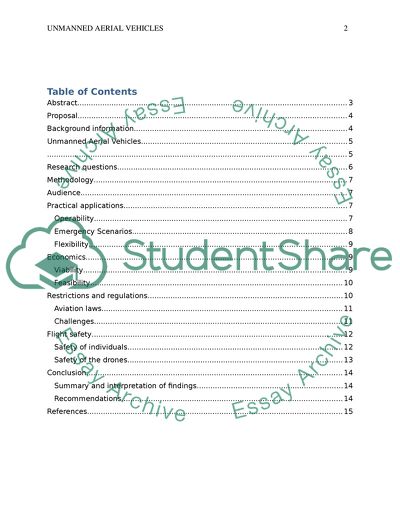Cite this document
(Using Unmanned Aerial Vehicles in Delivery of Parcels Research Paper - 1, n.d.)
Using Unmanned Aerial Vehicles in Delivery of Parcels Research Paper - 1. Retrieved from https://studentshare.org/technology/1878824-the-feasibility-of-using-unmanned-aerial-vehicles-in-delivery-of-parcels
Using Unmanned Aerial Vehicles in Delivery of Parcels Research Paper - 1. Retrieved from https://studentshare.org/technology/1878824-the-feasibility-of-using-unmanned-aerial-vehicles-in-delivery-of-parcels
(Using Unmanned Aerial Vehicles in Delivery of Parcels Research Paper - 1)
Using Unmanned Aerial Vehicles in Delivery of Parcels Research Paper - 1. https://studentshare.org/technology/1878824-the-feasibility-of-using-unmanned-aerial-vehicles-in-delivery-of-parcels.
Using Unmanned Aerial Vehicles in Delivery of Parcels Research Paper - 1. https://studentshare.org/technology/1878824-the-feasibility-of-using-unmanned-aerial-vehicles-in-delivery-of-parcels.
“Using Unmanned Aerial Vehicles in Delivery of Parcels Research Paper - 1”, n.d. https://studentshare.org/technology/1878824-the-feasibility-of-using-unmanned-aerial-vehicles-in-delivery-of-parcels.


